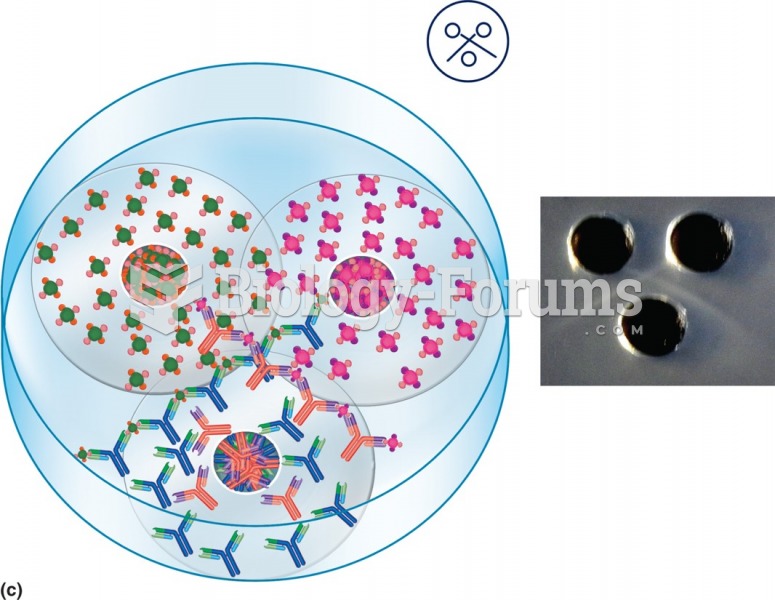|
|
|
People about to have surgery must tell their health care providers about all supplements they take.
According to animal studies, the typical American diet is damaging to the liver and may result in allergies, low energy, digestive problems, and a lack of ability to detoxify harmful substances.
Cocaine was isolated in 1860 and first used as a local anesthetic in 1884. Its first clinical use was by Sigmund Freud to wean a patient from morphine addiction. The fictional character Sherlock Holmes was supposed to be addicted to cocaine by injection.
Fewer than 10% of babies are born on their exact due dates, 50% are born within 1 week of the due date, and 90% are born within 2 weeks of the date.
After 5 years of being diagnosed with rheumatoid arthritis, one every three patients will no longer be able to work.
 Darters such as this male greenside darter form a diverse and distinctive subfamily of fishes within
Darters such as this male greenside darter form a diverse and distinctive subfamily of fishes within
 Small nuclear RNAs (snRNA), 100-200 bp in length, form part of the splicing mechanisms to process mR
Small nuclear RNAs (snRNA), 100-200 bp in length, form part of the splicing mechanisms to process mR
 The OBD-II catalytic converter monitor compares the signals of the upstream and downstream oxygen ...
The OBD-II catalytic converter monitor compares the signals of the upstream and downstream oxygen ...




